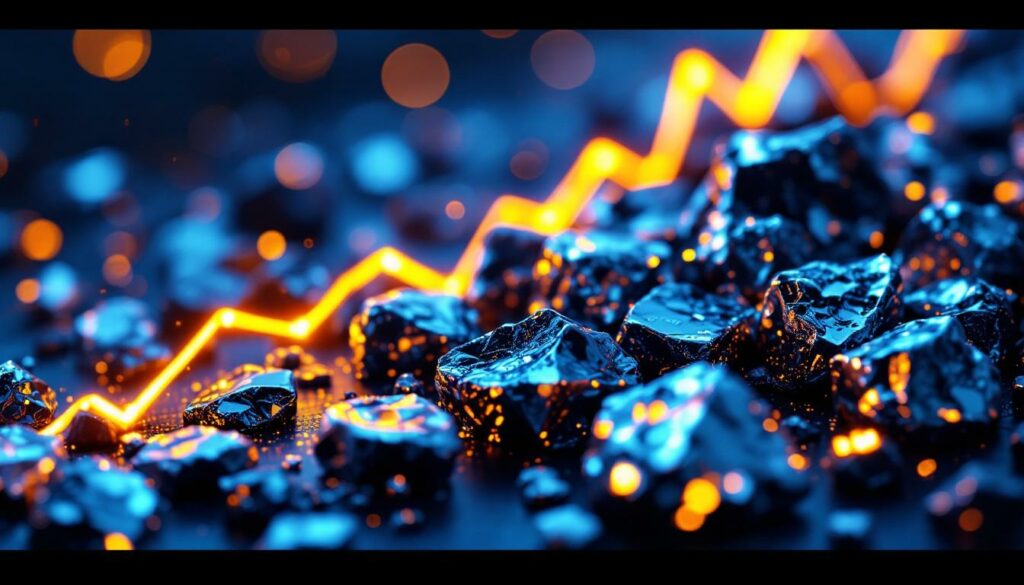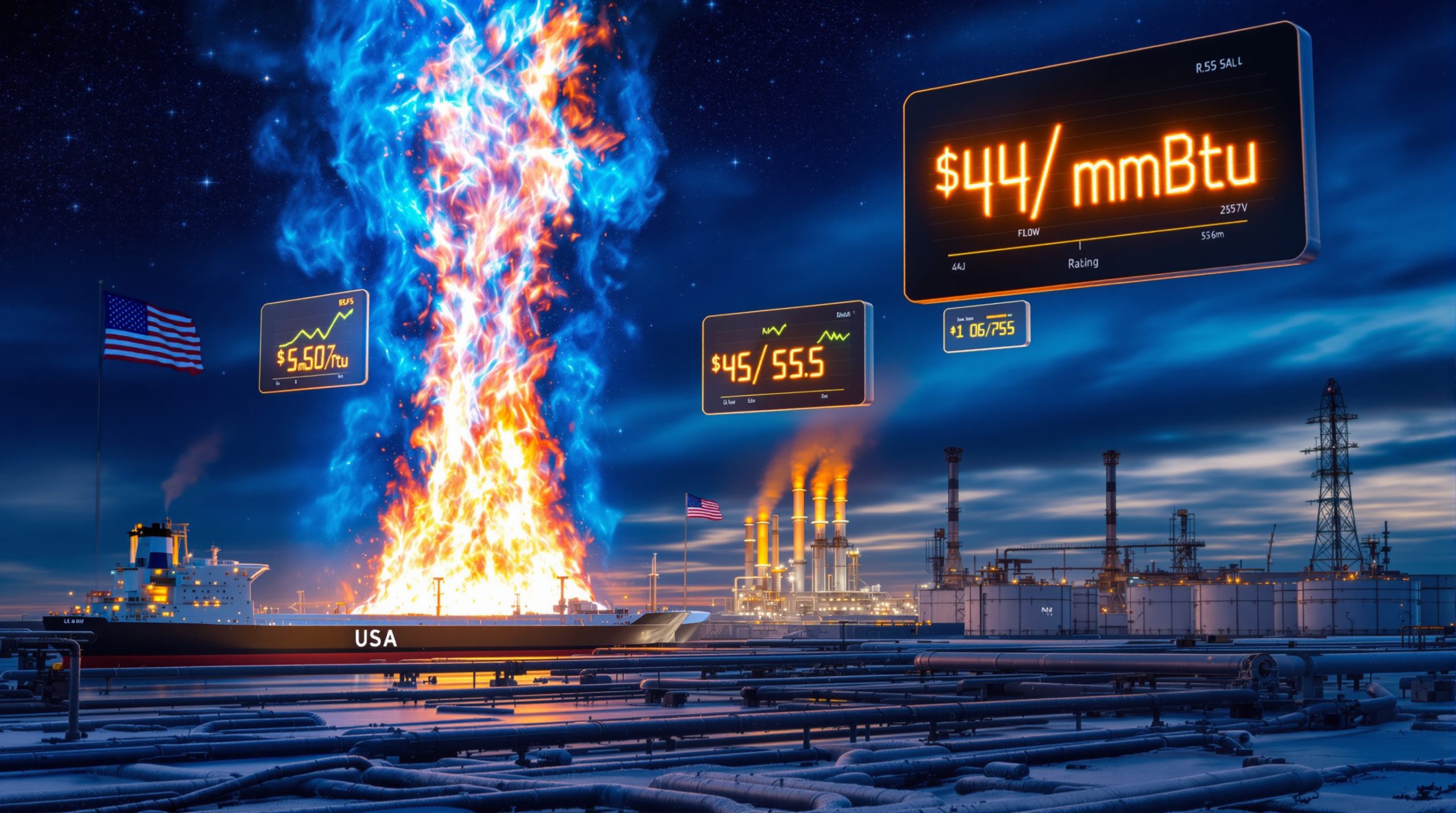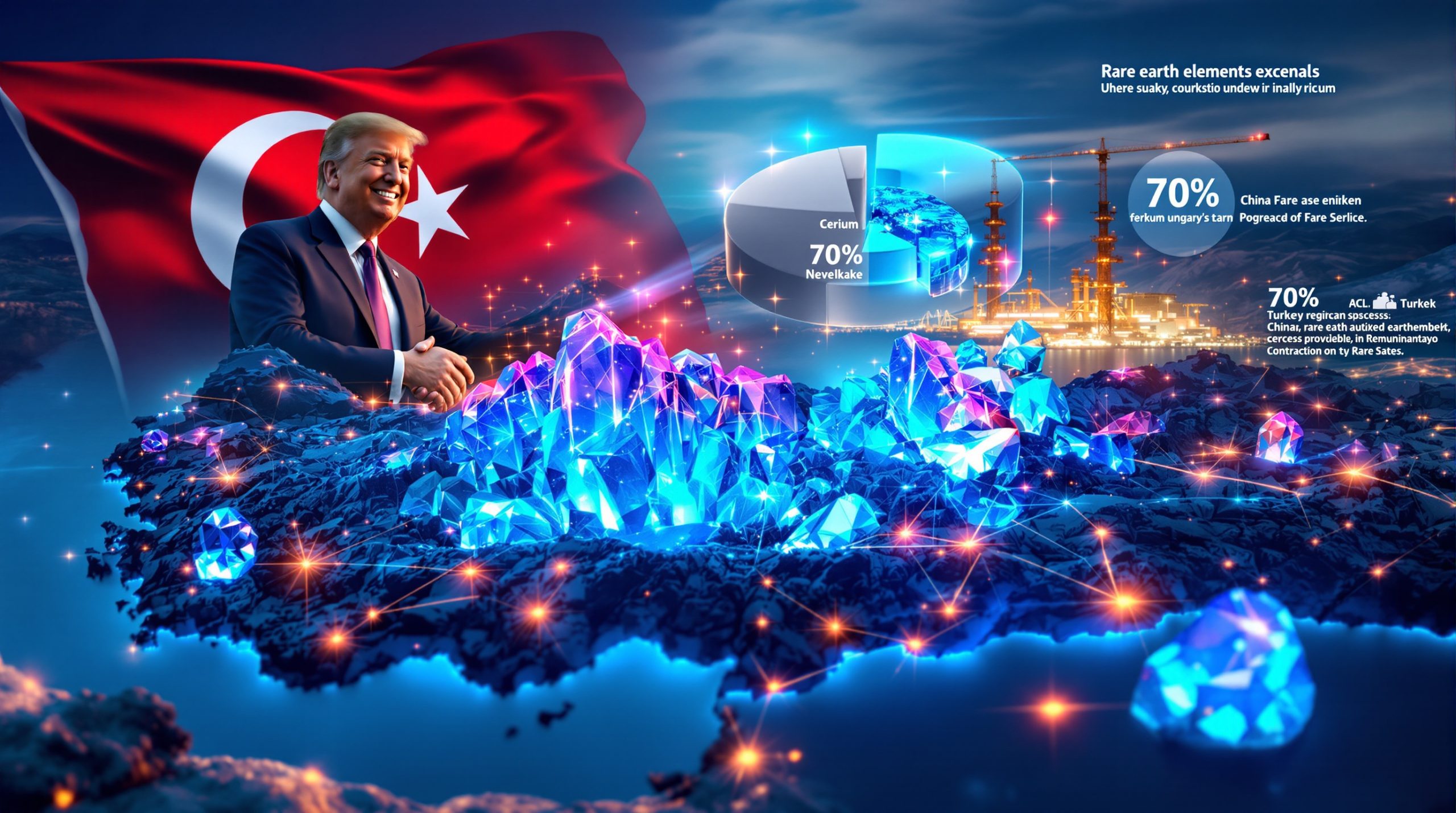What Made Refined Cobalt the Top Performer in H1 2025?
Record-Breaking 46.19% Price Surge
Refined cobalt emerged as the undisputed market leader in the metals sector during H1 2025, posting an extraordinary 46.19% price increase according to comprehensive SMM market data. This remarkable performance positioned cobalt well ahead of its nearest competitors, with antimony ingots trailing at +33.21% and terbium oxide at +26.16%.
The refined cobalt market demonstrated exceptional resilience amid broader market volatility, establishing a clear pattern of month-over-month price growth that defied typical seasonal fluctuations. Particularly noteworthy was cobalt's ability to maintain momentum even during periods when other metals experienced corrections.
Supply-Demand Structural Changes
The cobalt market underwent significant structural transformations compared to 2024 patterns, creating the perfect environment for price appreciation. Several key developments converged to reshape market dynamics:
-
Artisanal Mining Regulations: The Democratic Republic of Congo implemented stricter controls on artisanal mining operations, removing approximately 8,000-10,000 tonnes of annual supply from informal channels.
-
Processing Bottlenecks: Key refiners in China's Zhejiang province faced regulatory-driven production suspensions for environmental compliance upgrades, creating temporary but impactful refined material shortages.
-
Inventory Depletion: Global cobalt inventories reached multi-year lows in April 2025, with visible LME stocks declining to just 467 tonnes, representing less than two weeks of global consumption.
-
Battery Chemistry Shift: Despite long-term trends toward reduced cobalt intensity, a short-term reversal occurred as manufacturers prioritized energy density and thermal stability concerns, increasing cobalt content in certain NMC cathode formulations.
"The cobalt market in 2025 represents a classic case of structural undersupply meeting accelerating demand, with price being the inevitable adjustment mechanism," notes SMM's metals analyst team in their quarterly outlook.
Dollar Index Support
The six consecutive monthly declines in the US dollar index provided strong tailwinds for dollar-denominated metals, with cobalt being a primary beneficiary. This currency effect acted as a powerful multiplier on cobalt's already robust fundamental position:
- January: Dollar index fell 1.2%
- February: Dollar index declined 0.8%
- March: Dollar index dropped 1.5%
- April: Dollar index weakened 1.1%
- May: Dollar index retreated 0.9%
- June: Dollar index decreased 1.3%
This persistent dollar weakness effectively amplified cobalt's price gains beyond what supply-demand fundamentals alone would have produced. For international buyers purchasing in non-dollar currencies, the effective price increase was moderated, supporting continued demand growth despite rising dollar prices.
How Did Other Metals Perform Compared to Cobalt?
Top Performers Behind Cobalt
While refined cobalt claimed the top spot with its 46.19% surge, several other metals delivered impressive returns that outpaced most commodity segments:
Antimony Ingots (SMM #1): +33.21%
- Benefited from flame retardant applications amid stringent new safety regulations
- Military applications created additional demand pressure
- Chinese supply restrictions (70% of global production) tightened market
Terbium Oxide: +26.16%
- Essential for magnetostrictive alloys in precision motors
- Supply constraints from reduced Chinese mining quotas
- Growing applications in solid-state lighting technologies
Gold: +20.03%
- Haven demand amid geopolitical tensions
- Central bank purchasing (particularly from BRICS nations)
- Inflation hedging strategies gaining popularity
According to recent gold price analysis, the precious metal continues to benefit from both investment demand and central bank diversification strategies.
Black Tungsten Concentrate: +20.15%
- Industrial tooling demand recovered beyond expectations
- Supply disruptions in Vietnam affected global availability
- Defense sector procurement increased for specialty steel applications
These strong performers share common characteristics: supply constraints, industrial application growth, and relative insulation from construction sector weakness.
Market Underperformers
The metals market showed significant divergence in H1 2025, with several materials posting substantial losses:
Grade-I Metallurgical Coke: -26.34%
- Worst performer in the metals complex
- Overcapacity in Chinese production
- Steel industry demand contraction
- Coal sector transitions affecting production economics
Oxygen-blown #553 Silicon: -24.89%
- Solar industry demand failed to materialize as projected
- New production capacity created oversupply
- Aluminum industry weakness reduced consumption
Germanium Ingots: -15.95%
- Semiconductor industry destocking continued longer than expected
- Optical fiber demand weakened as 5G buildout plateaued
- Recycling improvements increased secondary supply
The divergent performance demonstrates how sector-specific factors can create dramatically different outcomes even within the broader metals complex.
Performance Comparison Table
| Metal/Material | H1 2025 Price Change (%) | Key Drivers | Market Position |
|---|---|---|---|
| Refined Cobalt | +46.19% | Battery demand, supply constraints | Market Leader |
| Antimony Ingots (SMM #1) | +33.21% | Flame retardant applications, supply restrictions | 2nd Place |
| Terbium Oxide | +26.16% | Rare earth quotas, precision motor demand | 3rd Place |
| Gold | +20.03% | Haven demand, central bank buying | 4th Place |
| Black Tungsten Concentrate | +20.15% | Industrial tooling, supply disruptions | 5th Place |
| Germanium Ingots | -15.95% | Semiconductor slowdown, recycling increase | Underperformer |
| Oxygen-blown #553 Silicon | -24.89% | Solar demand disappointment, oversupply | Significant Decline |
| Grade-I Metallurgical Coke | -26.34% | Steel industry contraction, overcapacity | Worst Performer |
What Key Factors Influenced the Metals Market in H1?
Geopolitical Tensions and Trade Policy Disruptions
Escalating geopolitical conflicts and frequent adjustments to US tariff policies created sharp market fluctuations across metal categories in H1 2025:
-
US-China Tensions: The April 2025 announcement of 104% tariffs on Chinese steel products immediately triggered market turbulence, with rebar prices accelerating their decline.
-
Resource Nationalism: Export restrictions on critical minerals expanded beyond China to include Indonesia (nickel), Chile (lithium), and Kazakhstan (uranium), fragmenting global supply chains.
-
Regional Conflicts: Shipping disruptions in the Red Sea increased freight costs by 27-35% for metals moving from Asia to Europe, creating regional price disparities and altering traditional trade flows.
These external factors introduced volatility that benefited some metals while severely impacting others. Notably, cobalt's concentrated production (71% from DRC) made it particularly sensitive to political stability concerns in Central Africa.
Macroeconomic Conditions
The declining US dollar index provided broad support for dollar-denominated metals, creating a favorable environment for price appreciation:
-
Inflation Persistence: Core inflation remained above central bank targets, supporting hard asset allocation strategies.
-
Interest Rate Expectations: Markets increasingly priced in Fed rate cuts, weakening the dollar and supporting non-yielding commodities.
-
Economic Growth Patterns: Divergent recovery speeds between regions created uneven metal demand, with Asia showing stronger consumption than Europe or North America.
This macroeconomic backdrop helped metals with strong fundamentals like refined cobalt to outperform expectations, while failing to rescue underperforming commodities with weaker supply-demand balances.
Industry-Specific Supply Constraints
Several top-performing metals experienced supply constraints due to production disruptions, regulatory changes, or resource limitations:
-
Cobalt: The Kamoa-Kakula accident in April reduced output by approximately 1,200 tonnes over a six-week period, exacerbating already tight refined material availability.
-
Antimony: Chinese environmental inspections forced multiple smelters to suspend operations in Hunan province (representing ~35% of global production).
-
Tungsten: Vietnamese export delays due to regulatory changes created spot market tightness for concentrate.
These supply-side factors created upward price pressure when combined with steady or increasing demand, explaining why certain metals significantly outperformed the broader complex.
Sectoral Demand Shifts
Evolving industrial applications and technological advancements drove demand changes across different metal categories:
-
Energy Transition: Battery materials (cobalt, lithium, nickel) saw resilient demand despite EV sales growth moderation in some markets. The growing importance of energy transition minerals continues to shape market dynamics.
-
Construction Weakness: Steel, copper, and aluminum faced headwinds from persistent global construction sector contraction, particularly in China's property market.
-
Defense Spending: Increased global military expenditures boosted specialized metals demand (tungsten, titanium, special alloys).
-
Computing Infrastructure: Data center expansion for AI applications supported specific metals in electronic applications.
These demand shifts created a multi-speed metals market, with clear winners and losers based on end-use exposure.
What's the Outlook for Cobalt and Other Metals in H2 2025?
Domestic Policy Support Expectations
Market participants anticipate intensified domestic policy support in H2 2025, potentially benefiting industrial metals and materials used in infrastructure and manufacturing:
-
Chinese Stimulus: Targeted measures focusing on advanced manufacturing and technological infrastructure are expected to support specialty metals demand.
-
European Green Deal Implementation: Accelerated funding disbursements for decarbonization projects will likely benefit battery materials and rare earths.
-
US Infrastructure Execution: The pipeline of funded infrastructure projects entering construction phase should support traditional industrial metals.
These policy measures could provide additional momentum for certain metal categories, though the effectiveness and timing remain subjects of debate among market analysts.
US Monetary Policy Trajectory
The Federal Reserve's monetary policy decisions remain under close scrutiny, with potential interest rate adjustments likely to influence metal prices through dollar strength and investment flows:
-
Rate Cut Timing: Markets are pricing in September and December 2025 rate cuts of 25 basis points each.
-
Inflation Persistence: Core service inflation remains sticky, potentially delaying dovish policy pivots.
-
Employment Trends: Labor market cooling could accelerate rate cut timelines, benefiting metal prices.
Market participants are closely monitoring signals from the Fed for directional guidance, with particular attention to Chairman Powell's Jackson Hole symposium remarks scheduled for August.
Trump-Era Tariff Impacts
The gradual emergence of Trump-era tariff impacts on the US economy may create secondary effects on global metal markets in H2 2025:
-
Supply Chain Reorganization: Companies are accelerating diversification away from tariff-affected sources, creating temporary inefficiencies and cost increases.
-
Price Transmission: US domestic prices for tariff-affected metals have risen faster than global benchmarks, creating arbitrage opportunities and regional disconnects.
-
Retaliatory Measures: Trading partners have begun implementing or announcing countermeasures, potentially creating cascading trade disruptions.
These trade policy consequences could reshape supply chains and alter regional price differentials in the coming months, creating both challenges and opportunities for market participants.
Supply-Demand Balance Forecasts
For cobalt specifically, ongoing supply chain adjustments and production capacity changes will determine whether its strong H1 performance can be sustained:
-
Battery Sector Growth: EV sales are projected to increase 14-17% in H2 2025, supporting cathode material demand despite ongoing thrifting efforts.
-
New Mining Capacity: Several projects are scheduled to begin production in H2, including Mutoshi (8,000 tonnes annual capacity) and Halls Creek cobalt expansion (additional 5,000 tonnes).
-
Processing Capacity Utilization: Chinese refiners have signaled intentions to increase operating rates as environmental compliance upgrades complete.
-
Inventory Rebuilding: Downstream consumers are expected to rebuild depleted inventories, potentially supporting prices despite increased production.
"The cobalt market enters H2 with historically low inventories and persistent structural challenges in bringing new supply online quickly. While we expect some supply response, the magnitude and timing remain uncertain," according to SMM analysis.
How Are Copper Markets Responding to Tariff Concerns?
US Copper Tariff Investigation Developments
Market sources indicate an imminent US midterm report on copper tariffs, with expectations of accelerated implementation timelines creating forward market uncertainty:
-
LME Forward Curve Impacts: November-December date spreads have returned to flat backwardation (from previous contango) as market participants adjust positions to hedge tariff implementation risk.
-
Premium Adjustments: US Midwest copper premiums have increased to 9.5-10.5 cents/lb (from 8-9 cents/lb in January) as buyers secure domestic material.
-
Import Pattern Shifts: Buying patterns show accelerated purchases ahead of potential tariff implementation, creating temporary demand surges from US consumers.
The investigation timeline suggests potential preliminary findings by September 2025, with final determinations possible before year-end, creating significant market uncertainty throughout H2.
Raw Material Constraints
Copper concentrates remain relatively tight in the short term, with miners adopting more aggressive benchmark expectations following production disruptions. Recent copper price insights highlight:
-
Kamoa-Kakula Impact: The April accident reduced output by approximately 12,000 tonnes of contained copper, removing material from spot markets.
-
Treatment Charge Trends: Spot TCs remain depressed at $65-75/dmt, showing no signs of recovery despite smelter production adjustments.
-
By-Product Economics: Gold and silver credits remain significant, affecting overall concentrate processing economics beyond copper content alone.
This raw material tightness limits smelters' ability to respond to finished copper demand, potentially supporting refined copper prices even if end-use demand softens.
Regional Production Adjustments
While Chinese smelters maintain high production levels supported by long-term contracts, Japanese and Chilean smelters have implemented production cuts or shutdowns:
-
Chinese Utilization: Major Chinese smelters operate at 89-92% of nameplate capacity, drawing on concentrate stockpiles and long-term supply agreements.
-
Japanese Adjustments: Three major Japanese smelters have reduced production by 15-20% due to concentrate shortages and unfavorable economics.
-
Chilean Developments: Two smaller Chilean smelters have announced temporary shutdowns for maintenance, removing approximately 25,000 tonnes of quarterly production.
This production imbalance is creating regional supply disparities that influence price differentials between Asian, European, and American markets.
Global Trade Flow Shifts
Africa continues to ship approximately 20,000 mt of copper cathode monthly to the US, while South America accounts for the majority of US import supply:
-
African Exports: Shipments from Africa to the US have remained steady at approximately 20,000 mt monthly, with Zambian material being particularly sought after for specific applications.
-
European Imports: European demand has diverted part of Africa's copper cathode shipments, with January-May European imports from Africa reaching 90,000 mt, up nearly 40,000 mt year-over-year.
-
Chinese Import Changes: China's copper cathode imports from January to May 2025 showed significant shifts:
- From Africa: 559,100 mt (-3.95% YoY)
- From South America: 180,100 mt (-52.81% YoY)
These trade flow shifts reflect both tariff anticipation and regional demand differentials, creating challenges for traders and consumers in securing consistent supply.
What's Happening in the Zinc Concentrate Market?
Processing Fee Trends
The domestic zinc concentrate market has seen easing supply tightness in H1 2025, reflected in treatment charge (TC) improvements:
-
Domestic TCs: Chinese domestic zinc concentrate treatment charges increased from 1,950 yuan/mt (metal content) at the beginning of the year to 3,800 yuan/mt by late June, reflecting improved raw material availability.
-
Imported TCs: TCs for imported zinc concentrate rose from -$20/dmt in January (indicating extreme tightness where smelters pay miners) to $65.25/dmt by June, approaching more historically normal levels.
-
Regional Variations: TCs in Australia-China trade routes improved more significantly than Peru-China routes, indicating differential regional supply recovery.
This easing represents a significant market shift from the extreme tightness observed throughout 2024 and early 2025, suggesting a more balanced concentrate market emerging.
Domestic Production Patterns
China's domestic zinc concentrate output reached 788,300 mt from January to May 2025, essentially flat (-0.06%) year-over-year, with new capacity offsetting declines elsewhere:
-
New Capacity: The Huoshaoyun zinc mine in Xinjiang began production in May, with initial monthly output of approximately 8,000-10,000 tonnes expected to increase to design capacity by Q4.
-
Aging Operations: Several mines in Inner Mongolia and Yunnan experienced declining grades and output, offset
Want to Capitalise on the Next Major Mineral Discovery?
Discovery Alert's proprietary Discovery IQ model instantly notifies investors of significant ASX mineral discoveries, providing real-time alerts that transform complex mineral data into actionable insights. Explore how historic discoveries have generated substantial returns by visiting Discovery Alert's dedicated discoveries page and start your 30-day free trial today to position yourself ahead of the market.




